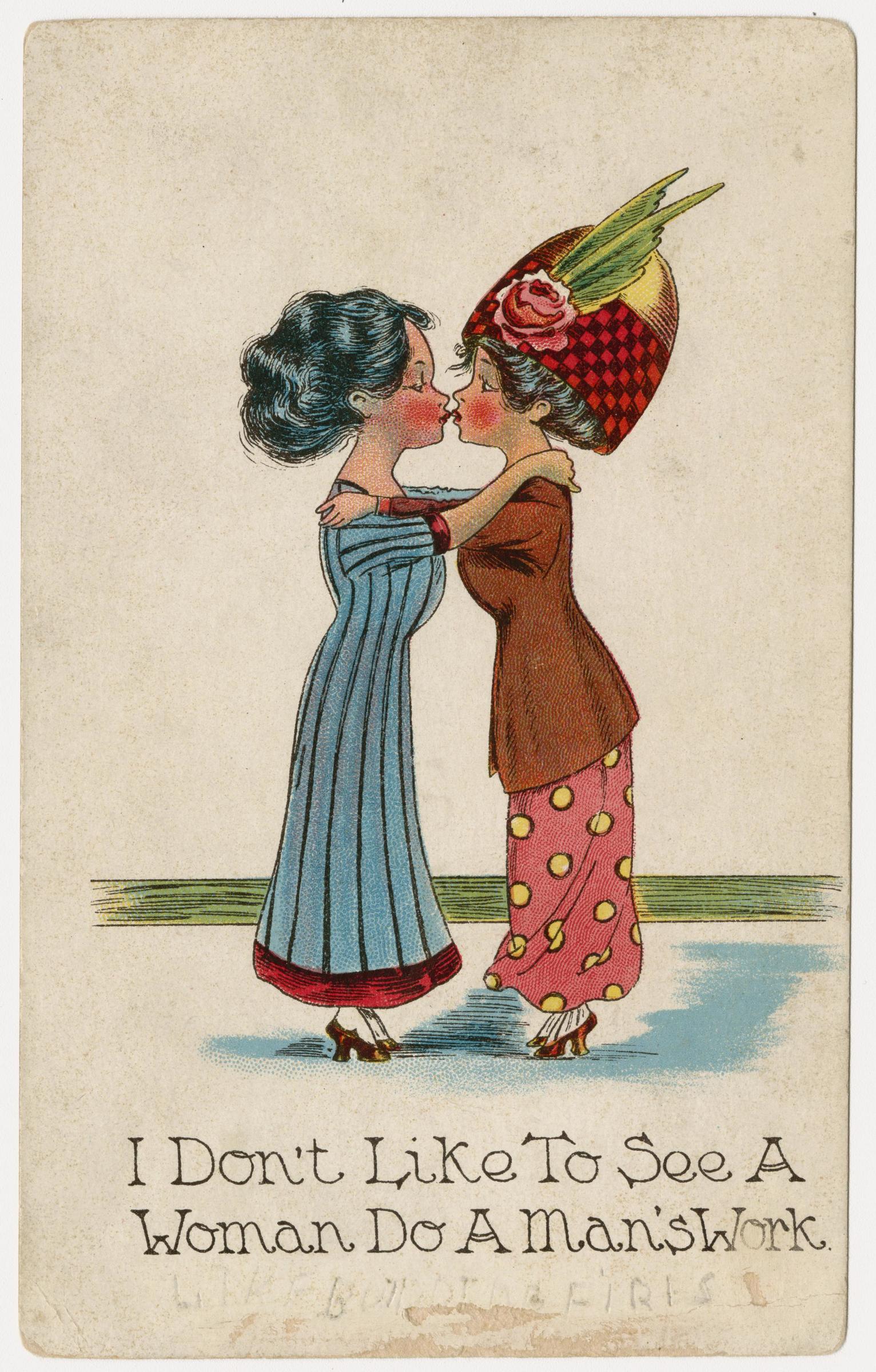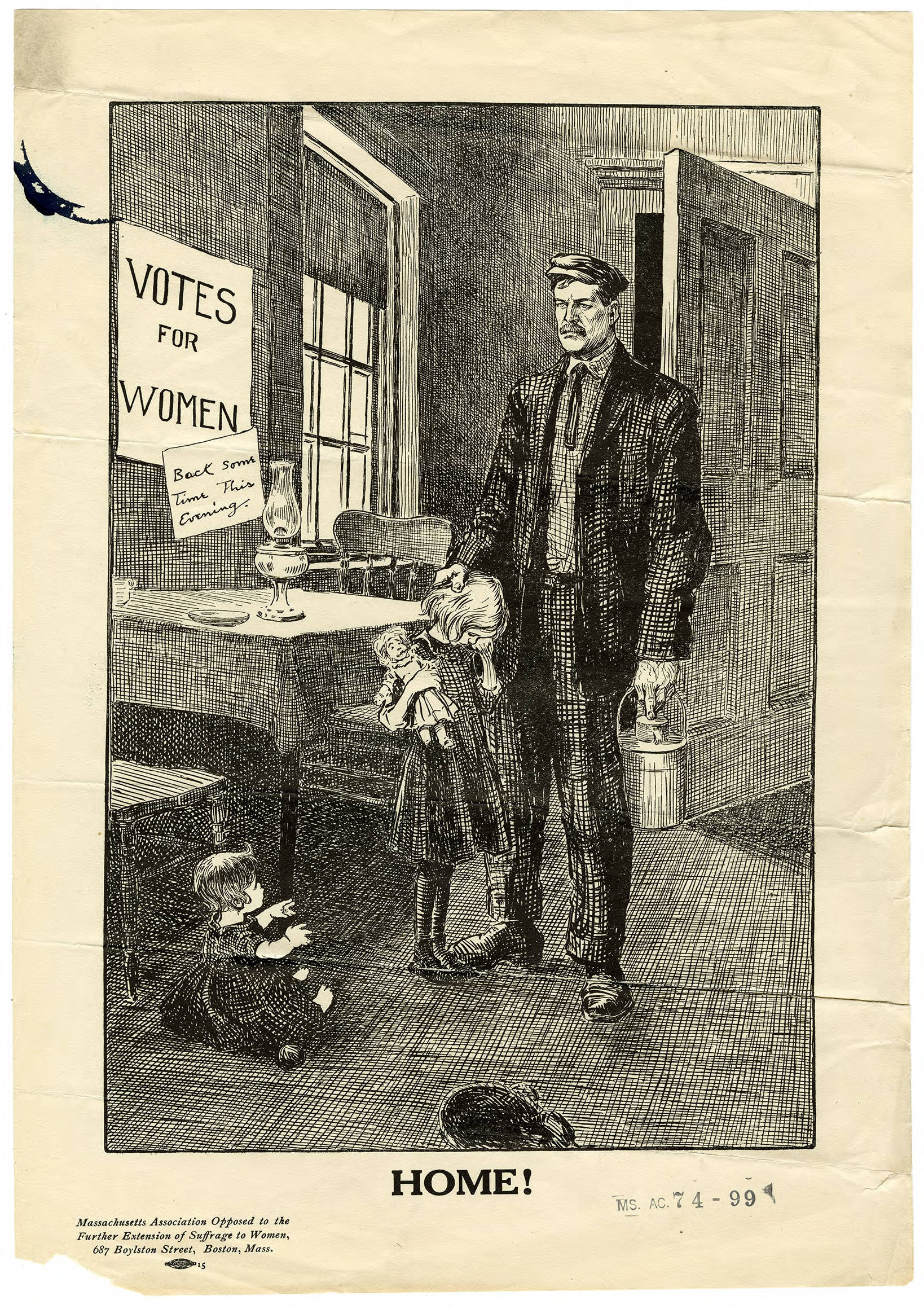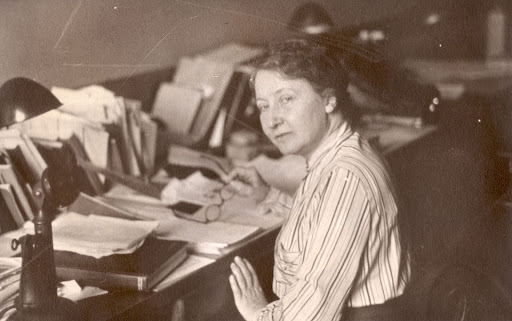Boston Marriages and the Queer History of Women's Suffrage
by Anna Boyles
On October 4, 1920. Sarah Stites and Helen Hodge left their Queensberry Street home in Boston to register to vote together. While transcribing women voter registers from 1920, members of the Mary Eliza Project research team have discovered many instances of women living at the same Boston address registering to vote together, just as Sarah Stites and Helen Hodge did.
A good number of these women that live together are related, mothers and daughters, sisters, and in-laws. In some instances, women living at the same address are simply neighbors in the same building, like in the case of the working women and students living at the Franklin Square House in the South End. The nature of some of the relationships that are revealed in the voter registrations are less clear, however. While researching her recent book Public Faces, Secret Lives: A Queer History of the Women’s Suffrage Movement, Wendy L. Rouse first discovered hints of Boston Marriages through identifying American suffragists who shared addresses.
The term “Boston Marriage” refers to a non-traditional, domestic relationship between two middle or upper-class women. These committed female relationships occurred primarily in New England, where higher numbers of college-educated women were financially secure enough to choose whether or not to enter a conventional, heterosexual marriage with a man. According to Rouse, biographers and scholars have documented such queer partnerships among suffragists such as Frances Willard and Anna Adams Gordon, Carrie Chapman Catt and Mary Garrett Hay, Jane Addams and Mary Rozet Smith, and Alice Stone Blackwell and Kitty Blackwell, among others. Unfortunately, the queer private lives of suffragists have been left out of the story commonly told about the women’s suffrage movement in the United States.
During their own lifetimes, suffragists who defied gender and sexual norms found themselves shut out of the mainstream women’s voting rights movement. Critics of women’s suffrage accused these progressive women of being “mannish,” and argued that granting women the right to vote would disrupt the “natural order” and the home. These opponents presented women campaigning for the right to vote as a wives or mothers abandoning their domestic duties. They blamed these public women for increased rates of juvenile delinquency, divorce, and sexual immorality. Suffrage leaders responded by embracing a traditional image of womanhood and shutting out activists who defied these norms. Rouse documents how the leaders of the National American Women’s Suffrage Association (NAWSA) distanced themselves from suffragist Dr. Mary Walker, who cut her hair short and wore traditionally masculine clothing such as pants and suit jackets. Boston native Margaret Foley, nicknamed the “heckler-in-chief,” too, found herself at odds with suffrage leadership. Foley was employed in a hat factory and served as treasurer of Hat Trimmers Union before working for several suffrage organizations. Her loud demeanor, public tactics, and unwavering support for the working class caused tension with the upper and middle class women’s voting organizations in Massachusetts. Nevertheless, Foley traveled the country campaigning for women’s suffrage, forming a lifelong relationship with Helen Elizabeth Goodnow, a wealthy Boston suffragist. Foley lived with Goodnow until her death in 1957.
One example of such a partnership in the 1920 Boston women’s voter registers was that of Sarah H. Stites and Helen H. Hodge. The two women registered to vote together on October 4, 1920, and were recorded by clerks as both residing at 11 Queensberry Street. Their home, located in the Fenway neighborhood of Boston, was just a short walk from Simmons College (now Simmons University), where Stites had worked as an economics professor for a number of years.
Stites was recorded in the alumnae news of the Bryn Mawr Quarterly in 1914 as a paid instructor in economics at Simmons College. In addition, she self-reported that her current hobby was gardening and that she was a supporter of suffrage for women. It is unclear how she may have campaigned for women’s suffrage, but she was a member of the Legislative Bureau of the Progressive Party of Massachusetts and the Legislative Committee of the Political Equity Union. She lived with Helen Hodge from at least 1920 through 1950. They moved together from Boston to Brookline and eventually to Wayland, Massachusetts. Hodge was listed sometimes on the United States Census as a lodger in Stites household; other times she was recorded by census takers as Stites’s partner or friend. Stites adopted a son and the three appeared as a household unit in the 1930 U.S. Census. This non-traditional family defied gender norms of the day, but Sarah H. Stites and Helen Hodge were certainly not the only suffragists to form their own ideal lifetime partnerships and families.
Learn more:
Wendy L. Rouse, Public Faces, Secret Lives: A Queer History of the Women’s Suffrage Movement
Sarah Deutsch, Women and the City: Gender, Space, and Power in Boston, 1870-1940
National Park Service, Margaret Foley
National Park Service, Boston Marriages
Anna Boyles is a dual-degree student in History and Archives Management at Simmons University.





